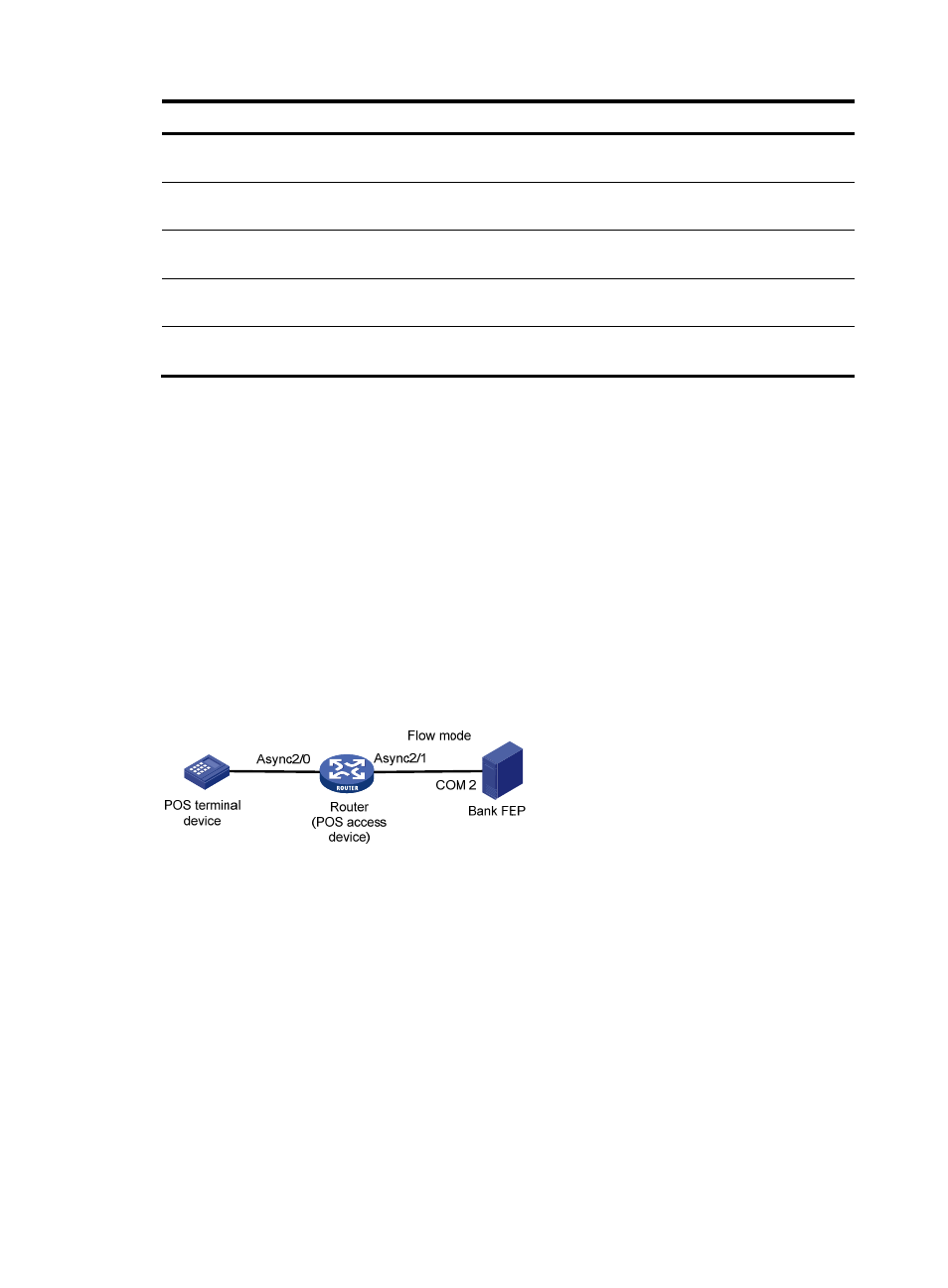Pos access configuration examples, Network requirements, Configuration procedure – H3C Technologies H3C MSR 5600 User Manual
Page 22

15
Task Command
Display POS application template status
information.
display posa status app [ app-id ] [ | { begin | exclude |
include } regular-expression ]
Display POS terminal template status information.
display posa status terminal [ terminal-id ] [ | { begin |
exclude | include } regular-expression ]
Display connection information for TCP-based
POS terminals.
display posa connection terminal [ terminal-id ]
Clear POS application template or POS terminal
template statistics.
reset posa statistics [ app [ app-id ] | terminal
[ terminal-id ] ]
Disconnect the router from POS terminals
reset posa connection terminal { all | source-ip ip-addr1 |
destination-ip ip-addr2 | destination-port port-number }
POS access configuration examples
POS flow terminal and flow application configuration example
Network requirements
As shown in
, a POS terminal is connected to the router through a serial port. The router is
connected to COM2 of the FEP through a serial port.
The POS access service has been enabled on the FEP. The FEP uses COM2 to transmit data. The POS
terminal packets are destined for 0lf1.
Configure POS access on the router so the POS terminal can access the FEP.
Figure 7 Network diagram
Configuration procedure
1.
Enable POS access service.
[Sysname] posa server enable
2.
Configure the POS application template:
# Configure the application template 1 in flow mode.
[Sysname] posa app 1 type flow
[Sysname-posa-app1] quit
# Bind Async 2/1 to application template 1.
[Sysname] interface async 2/1
[Sysname-Async2/1] async-mode flow
[Sysname-Async2/1] posa bind app 1
